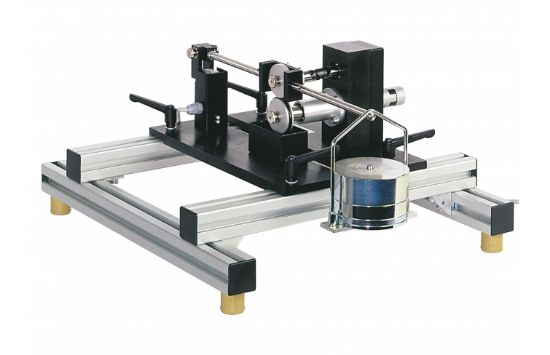In bearing and drive technology, dynamic friction occurs at the sliding and rolling points, which leads to power losses in the technical systems. Dynamic friction is differentiated into sliding, rolling and spinning friction. In dynamic friction, there is relative translation between the two bodies. Rolling friction occurs when two bodies roll on each other without sliding. In rolling friction, the rolling motion is superposed with a smaller sliding friction, known as slip. Rolling friction is therefore a combination of rolling and dynamic friction.
The tribological system in TM 260.01 allows a clear representation of the rolling friction and an analysis of the frictional forces. The experimental unit comprises two friction wheels, pairing the materials aluminium and rubber at the contact points.
The slip between the friction wheels is kept constant at 4% by a gear unit. The contact force can be adjusted gradually up to a maximum of 80 N by means of a lever. The experimental unit includes a tank that supplies lubricant. Different lubrication conditions can be studied, such as dry friction, water or oil lubrication.
The TM 260 drive unit is required in order to conduct experiments. The experimental unit is mounted quickly and easily on the frame of the drive unit with quick-action chucks. The driving wheel is driven by a clampable coupling between drive unit and gear unit. The display and control unit of the drive unit shows frictional force and speed and allows the continuous adjustment of the speed.
The frictional force and the coefficient of friction can be determined in experiments. The frictional forces are measured by a force sensor.

